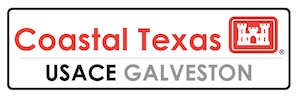Not everyone thinks the best design was chosen.
Jim Blackburn, a Rice professor and co-director of [Rice] university’s Severe Storm Prediction, Education & Evacuation from Disasters (SSPEED) Center, says the Corps’ initial Ike Dike study was incomplete because it did not account for the more powerful storms that have swept through the Gulf Coast and the Caribbean in recent years. The Corps’ coastal plan, called the Ike Dike, is named for the 2008 hurricane that caused more than $30 billion in damages to the Houston-Galveston region.
Hurricanes more powerful than Ike, including Harvey, Irma and Maria all in 2017, had unique characteristics rarely seen in major storms, Blackburn said.
“The storms that are being analyzed by the Corps are, in my opinion, too small,” Blackburn said. “They’re just not making landfall at the worst locations, with the type of wind fields and characteristics we’re seeing. I can’t remember if it was (Hurricanes) Irma or Maria, it was an Ike-like storm with Category 5 winds. That’s not supposed to happen.”
Larry Dunbar, a project manager at the SSPEED Center, added that the modeling system the Corps used to predict the effects of storms on its proposed barrier was outdated and that the study did not account for the worst possible storm tracts that could hit the Houston area.
“We said we’re using the updated information because that’s what we do, and (the Army Corps of Engineers) said, ‘That’s fine, we’re gonna use the old model because that’s what the flood insurance study work was based on and we want to be consistent with that,’” Dunbar said. “I can’t argue with that, but we at least now know what’s the difference between the two models, what effect it has, its effect on larger storms, you know it, I know it.”
Blackburn also believes the Corps’ proposed barrier leave parts of Harris County — most notably the Port of Houston and the sprawling industrial and petrochemical facilities along Galveston Bay — vulnerable.
“We think that there is too much remaining surge exposure, and it’s a valid concern, both with regard to the ship channel, to the Bayport Industrial Complex and with regard to the Clear Lake area,” Blackburn said.
The Corps’ alternative proposal includes a navigation gate placed along the Houston Ship Channel and smaller gates built near Clear Creek and Dickinson Bayou, but does not go as far as the SSPEED Center’s proposal for a mid-bay gate to protect Galveston Bay.
The Galveston Bay Park plan, first proposed by the SSPEED Center in 2015, includes similar protection features as the Corps proposal for protecting Bolivar Peninsula and Galveston, but adds a vital component: a 25-foot, mid-bay barrier system that would protect the industrial complexes and densely populated areas in the west and northwest sections of Galveston Bay.
Blackburn views the mid-bay gate as part of a bifurcated system — an internal barrier and a coastal barrier — that would not preclude the Ike Dike concept favored by the Corps and political leadership on the local, state and federal levels. He called the gate a “highly complementary” feature to the extensive barrier the Corps put forth, but one that could be built in half the time at a fraction of the cost — estimated from $3 billion to $5 billion.
“We think this alternative needs to be permitted,” Blackburn said. “We’re going to be urging Harris County to investigate filing a permit application. We are going to argue that to any governmental entity that is interested. I think we need options. If all of our eggs are in a $30 billion federal appropriation, that just sounds too risky to me.”
See here and here for the background, and here for the documents that are up for public review. There are a series of public meetings scheduled for this, and you can offer your own feedback at one of them, via email to CoastalTexas@usace.army.mil, or via good old fashioned snail mail to:
USACE, Galveston District, Attn: Ms. Jennifer Morgan, Environmental Compliance Branch, Regional Planning and Environmental Center, P.O. Box 1229, Galveston, TX 77553-1229
Deadline for snail mail is January 9. Whatever the best solution is, I hope everyone who wants to have a say does so, and that the Army Corps listens to Professors Blackburn and Dunbar.

